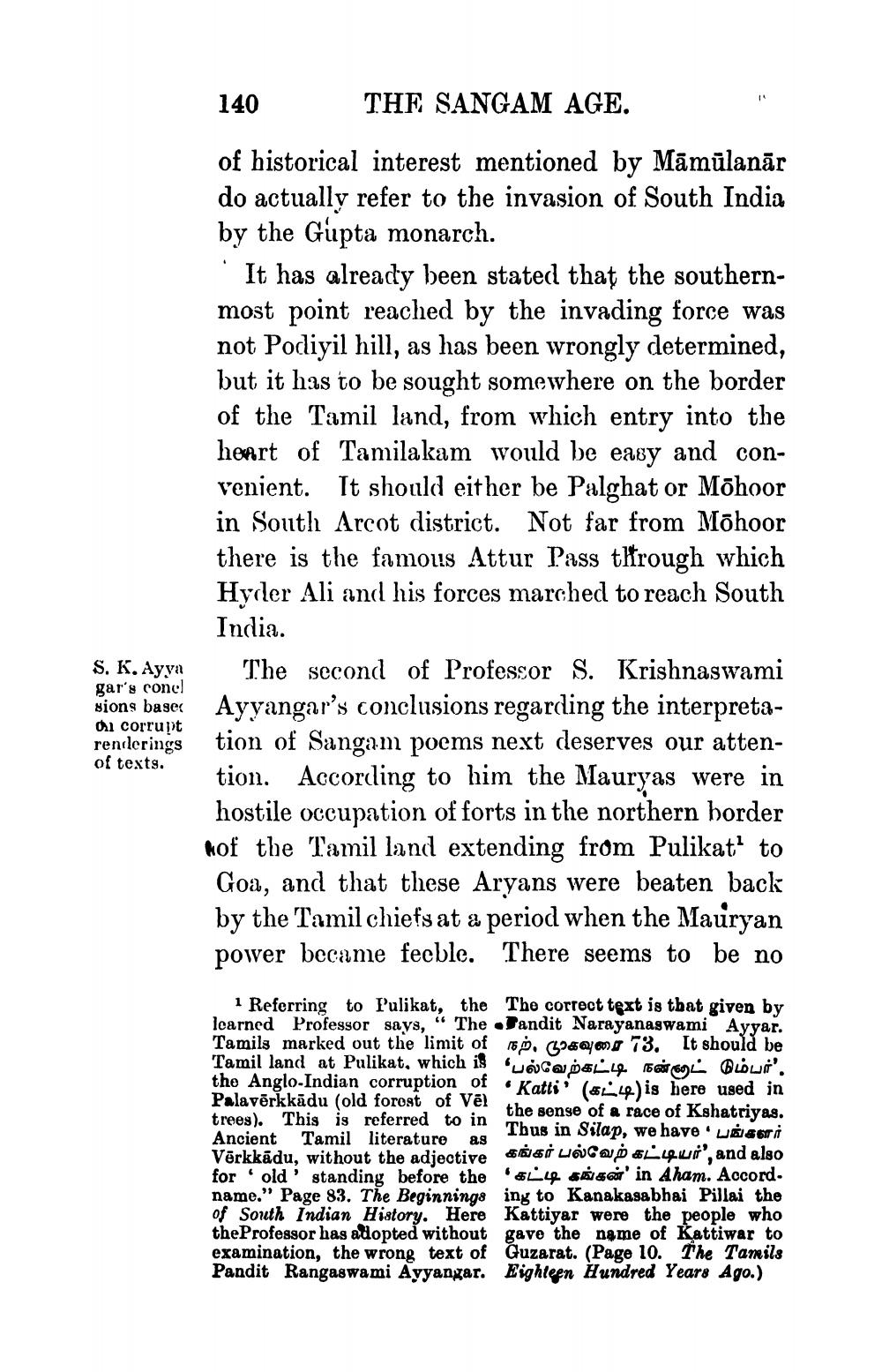________________
140
THE SANGAM AGE.
of historical interest mentioned by Māmūlanār do actually refer to the invasion of South India by the Gupta monarch.
It has already been stated that the southernmost point reached by the invading force was not Podiyil hill, as has been wrongly determined, but it has to be sought somewhere on the border of the Tamil land, from which entry into the heart of Tamilakam would be easy and convenient. It should either be Palghat or Mōhoor in South Arcot district. Not far from Māhoor there is the famous Attur Pass through which Hyrler Ali and his forces marched to reach South India.
The second of Professor S. Krishnaswami Ayyangar's conclusions regarding the interpretation of Sangam poems next deserves our attention. According to him the Mauryas were in hostile occupation of forts in the northern border nof the Tamil land extending from Pulikat' to Goa, and that these Aryans were beaten back by the Tamil chiefs at a period when the Mauryan power became feeble. There seems to be no
S. K. Ayya gar's conel sions base ai corrupt renderings of texts.
1 Referring to Pulikat, the The correct text is that given by learned Professor says, " The Jandit Narayanaswami Ayyar. Tamils marked out the limit of நற், முகவுரை 73. It should be Tamil land at Pulikat, which is 'UCADELL (6669 Blur. the Anglo-Indian corruption of Katti' (LL) is here used in Palavõrkkādu (old forost of Vēl, trees). This is referred to in
the sense of a race of Kshatriyas. Ancient Tamil literature as
Tbus in Silap, we have . LIESTI Vērkkādu, without the adiective & LoCa Loui', and also for 'old' standing before the '14 SET' in Aham. Accord. name." Page 83. The Beginnings ing to Kanakasabhai Pillai the of South Indian History. Here Kattiyar were the people who the Professor has adopted without gave the name of Kattiwar to examination, the wrong text of Guzarat. (Page 10. The Tamils Pandit Rangaswami Ayyangar. Eighteen Hundred Years Ago.)




